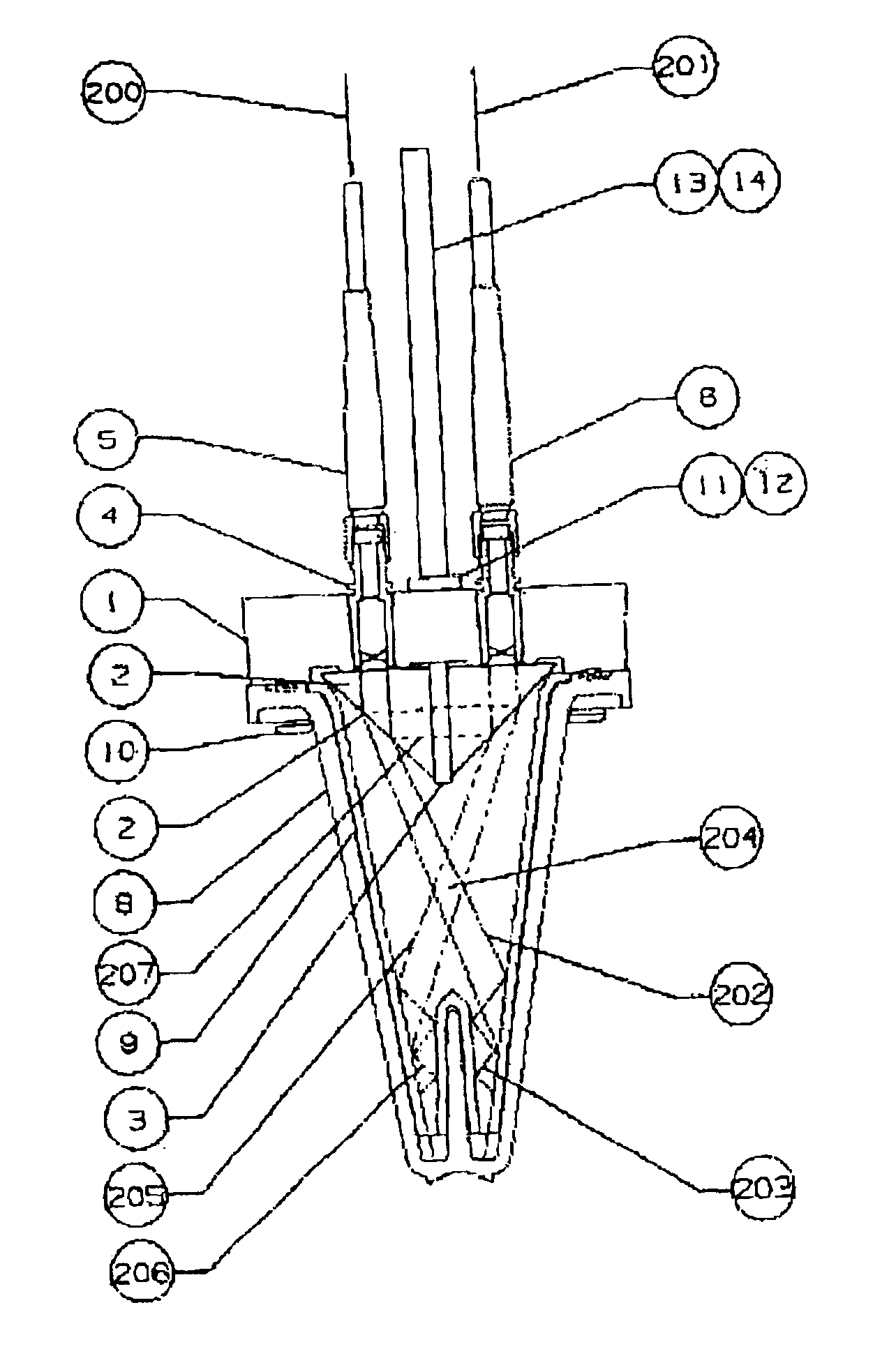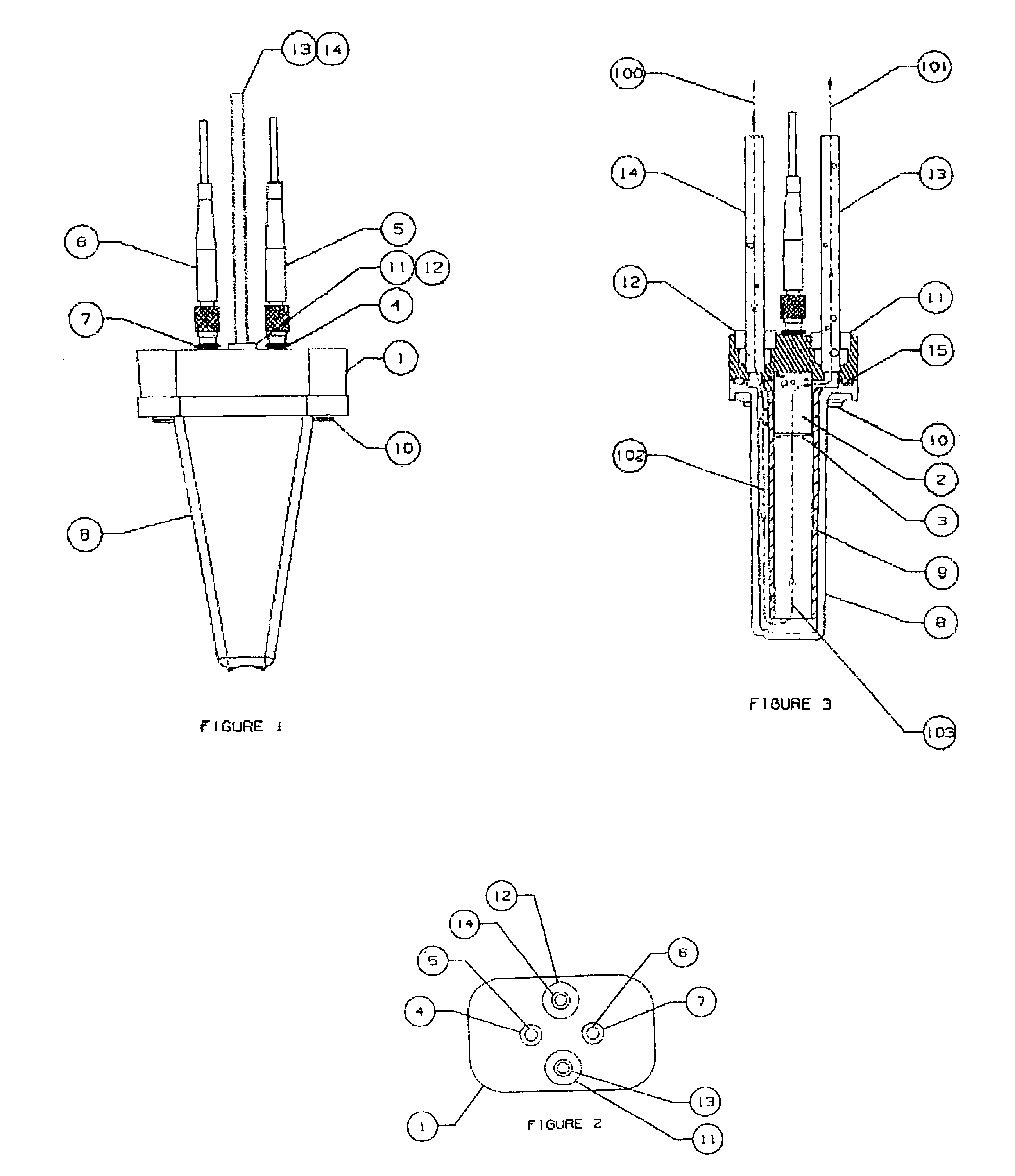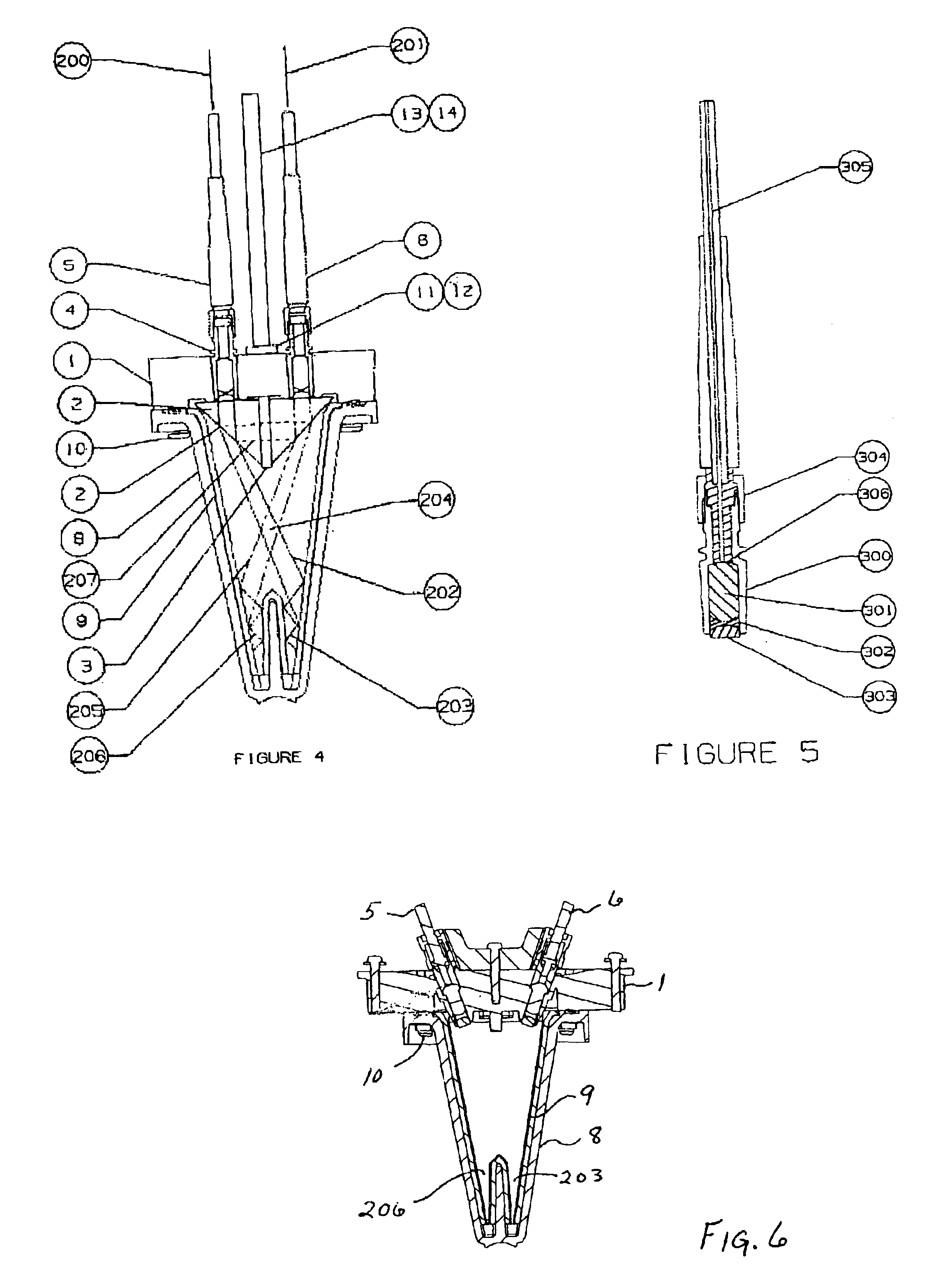Low detection limit turbidimeter
a turbidimeter and detection limit technology, applied in the field of turbidity measurement of solids in suspensions, can solve the problems of stray light diffusely reflected from internal surfaces, the measurement of solids or particles cannot meet the requirements of conventional turbidimeters, and the effect of effective extinguishing the beam and reducing the velocity of the sample flow
- Summary
- Abstract
- Description
- Claims
- Application Information
AI Technical Summary
Benefits of technology
Problems solved by technology
Method used
Image
Examples
Embodiment Construction
[0020]One embodiment of the present invention is shown in FIGS. 1-5, comprising an optical base 1, right angle prisms 2, optical filter 3, collimate lens assembly 4, focus lens assembly 7 and fiber optic cable assemblies 5 and 6. An outer enclosures, flow diverter 9, retaining screws 10, tubing connectors 11 and 12, sample inlet tube 14 and sample outlet tube 13, and gasket 15 comprise the remaining components of this embodiment of turbidimeter.
[0021]The optical base 1 provides a means to align and position the prisms 2, optical filter 3, and collimating lens assemblies 4 and 7. The right angle prisms 2 and optical filter 3 are bonded together using optical epoxy such as “Epo-Tek 301-2” and attached to the optical base 1 using structural epoxy such as “3M Scotch-Weld 2216 B / A”. The optical filter 3 extends beyond the face of the prisms to prevent stray light from being scattered into the return path 201 in FIG. 4. The collimating lens assemblies are bonded in like fashion to the pri...
PUM
| Property | Measurement | Unit |
|---|---|---|
| size | aaaaa | aaaaa |
| angle | aaaaa | aaaaa |
| refractive index | aaaaa | aaaaa |
Abstract
Description
Claims
Application Information
 Login to View More
Login to View More - R&D
- Intellectual Property
- Life Sciences
- Materials
- Tech Scout
- Unparalleled Data Quality
- Higher Quality Content
- 60% Fewer Hallucinations
Browse by: Latest US Patents, China's latest patents, Technical Efficacy Thesaurus, Application Domain, Technology Topic, Popular Technical Reports.
© 2025 PatSnap. All rights reserved.Legal|Privacy policy|Modern Slavery Act Transparency Statement|Sitemap|About US| Contact US: help@patsnap.com



